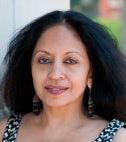 Anita Nahal
Anita NahalAs an alumna of the University of Delhi, India’s leading Central University, and former associate professor in one of its undergraduate colleges, I am following with great interest the university’s decision to replace the current three-year undergraduate degree with a four-year program for the upcoming July 2013 session. The discussions and debate are heated.
The new program, defined as multi-layered and multi-faceted, is intended to offer employable opportunities, as well as higher research capabilities to its graduates. It aims to keep India’s economic structure and requirements in mind while educating and training its future HR capital. Though not an objective to begin with, one of the additional outcomes will be the alignment of India’s undergraduate education with the U.S. one.
It’s well known, and documented, that students from India are at a disadvantage when applying for graduate school in the United States because an Indian undergraduate degree is of three years, unlike the American four-year one. Also, U.S. colleges offer a combination of majors and minors, thereby providing a more holistic and liberal arts education. The new program will respond to both differences. The length has been increased to four years; therefore, Indian students will not have to do one additional year of certification or attain a master’s degree in India to be eligible for U.S. graduate school applications. Of course, not all Indian students who go to the U.S. come from the University of Delhi; however, if the new program proves successful in years to come and is replicated by other universities in India, the ramifications will be profound for Indian students and U.S. graduate schools.
As far as credit hours and the major/minor equation is concerned, the former three-year undergraduate in India had a reasonably good combination of major and minor courses, and the credit hours were sufficient, as well. However, with the new program, the number and type of minors offered will be greatly expanded. Furthermore, students will also take foundation courses (focusing on communication, IT and data skills) and applied courses (assisting in greater employability).
There will also be multiple exit points. Those who would like to leave after two years will receive an associate degree, similar to the one received by students at community colleges in the U.S. Those who would like to leave after three years will receive an undergraduate degree, and only those who wish to pursue research and higher education will choose to do the additional fourth year (earning an honors degree), wherein they will be introduced to research methodology, thus preparing them for graduate school in India or abroad.
Detractors speak of an authoritarian and rushed approach by Dr. Dinesh Singh, the vice chancellor of Delhi University, and supporting faculty. The multiple exit points, they say, will create a class structure and the economically and socially disadvantaged will be further pushed down the education or employment ladder.
However, supporters speak of sieving out idealism and practically taking the economic sector in India by the horns and providing students multiple opportunities to gain additional knowledge and skills, while still delivering quality and affordable education. To advance learning parity, all students will receive a free laptop. I had the privilege of speaking over the phone about the new program with the registrar of the university, Alka Sharma, who is also a long time friend. She emphasized that the objective of the program was to develop synergy between education and employment in India. In another interview on a local TV channel, Sharma said the new program would provide more flexibility, thereby leading to individual character building and, in turn, nation building. In an interview with another local channel, Singh said that the new system will allow students to use knowledge for the welfare and benefit of the society and has the support of the most distinguished faculty, fellows of the academies of the sciences, deans and professors. When asked by the interviewer about ideological opposition by a group of faculty, Singh said that the opposition primarily comes from what they think is the left-oriented faculty.
Supporters or detractors, one hopes that the new program does ultimately benefit all students and not just some sections.
According to the Council of Graduate Schools’ 2013 Graduate International Admissions Survey, Phase 1, India still holds the second position in the percentage of students in graduate schools in the U.S. “China sent approximately 29 percent of all international students to U.S. institutions, while India sent about 20 percent, and Brazil sent about 1 percent of all international students.” Given the appeal of U.S. graduate education for Indian students, the new program will ease the path toward application. It might be possible that in the years to come, Indian students will outnumber those from China in U.S. graduate programs. Just one more way that India and China, two of the BRICKS, will keep the competition going.
Anita Nahal, Ph.D. is a diversity practitioner, educationist, author and founder & chairperson of www.diversitydiscover.com. She is former assistant provost for international programs, Howard University, Washington D.C. Learn more about Dr. Nahal at: http://diversitydiscover.com/founder.html















